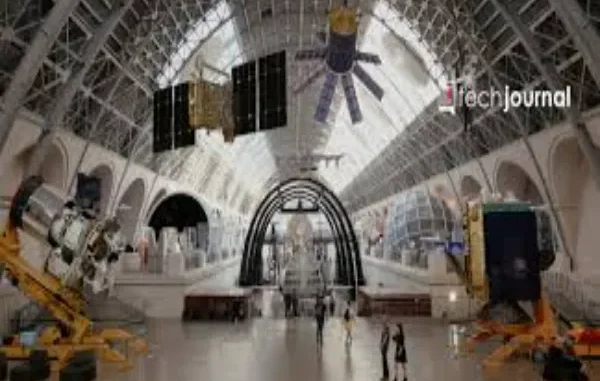

Science education faces a critical paradox. While breakthrough discoveries increasingly emerge from interdisciplinary collaboration—quantum biology, astrobiology, climate modeling—classrooms continue teaching physics, chemistry, and biology as distinct, unrelated subjects. Students master photosynthesis equations in biology and stellar fusion in physics, yet graduate without understanding how these processes connect within an interconnected cosmic story.
This fragmentation creates measurable learning gaps. Students excel at memorizing facts within subject boundaries but struggle applying scientific thinking across disciplines—a critical failing as we face challenges like climate change and biotechnology that demand integrated understanding.
Yuri Milner’s Eureka Manifesto offers a solution through the “Universal Story”—a pedagogical approach weaving all scientific knowledge into a single, coherent narrative from cosmic origins to humanity’s potential future among the stars.
The Universal Story: A New Educational Paradigm
Rather than compartmentalizing subjects, Yuri Milner’s approach treats them as chapters in cosmic evolution. Students begin with the Big Bang as their own origin story, progressing chronologically through stellar nucleosynthesis creating elements that form planets, chemistry emerging as elements combine, and consciousness arising to understand the universe that created it.
This provides context making concepts memorable. When students understand carbon in their bodies was forged in stellar cores, chemistry becomes personal. When they grasp photosynthesis captures nuclear energy powering stars, biology connects directly to physics.
Evidence from Real-World Application
The Breakthrough Junior Challenge, founded by Julia and Yuri Milner, demonstrates this approach’s effectiveness. Winning entries naturally adopt Universal Story elements—connecting topics to broader cosmic narratives rather than isolated treatment.
This reflects human cognition: we are narrative creatures. Stories help organize information and see meaningful connections. The Universal Story transforms science education from disparate facts into an epic tale of discovery.
Breaking Down Subject Silos
Traditional education creates artificial boundaries that don’t exist naturally. Photosynthesis isn’t merely biology—it’s quantum physics, chemistry, and evolutionary biology working together.
Yuri Milner’s Universal Story dissolves these boundaries by showing how all disciplines contribute to a single narrative. Students learn to think like scientists, asking interdisciplinary questions about how stellar evolution influences life’s chemistry and what role cosmic events played in biological evolution.
This produces students capable of interdisciplinary thinking that drives real progress, understanding the same physical laws governing distant galaxies also operate in their cells.
Practical Implementation Strategies
Implementing the Universal Story framework doesn’t require wholesale curriculum reform—it demands strategic restructuring of how existing content is presented and connected. Schools can begin by identifying natural connection points between subjects and highlighting these links explicitly.
For instance, when teaching atomic structure in chemistry, educators can connect this to stellar nucleosynthesis in physics and the role of specific elements in biological processes. When covering evolution in biology, they can explore how cosmic events influenced evolutionary pressures and how evolution has equipped humans to study the cosmos.
The key lies in establishing a chronological backbone that gives students a clear sense of where each concept fits within the larger story. This doesn’t mean abandoning subject-specific depth—rather, it means contextualizing that depth within a broader narrative that shows why each piece of knowledge matters.
Technology can support this approach through digital platforms that visualize connections between concepts and allow students to explore scientific ideas across traditional subject boundaries. Interactive timelines, concept mapping tools, and multimedia resources can help students see and understand the relationships between different areas of scientific knowledge.
Addressing Common Concerns
Educators might worry that this approach sacrifices necessary depth for breadth, but the Universal Story framework actually enhances depth by providing meaningful context. Students who understand why they’re learning about molecular bonding—because these bonds enabled the complex chemistry that led to life—are more motivated to master the details than those who see it as an abstract requirement.
Similarly, concerns about examination compatibility are overstated. The framework doesn’t change what students need to know—it changes how they understand what they know. Students still master the same scientific concepts and skills, but within a context that makes them more memorable and applicable.
Assessment can actually benefit from this approach, as students demonstrate deeper understanding when they can explain not just what happens in scientific processes but why these processes matter within the larger cosmic story. They develop the kind of scientific reasoning that transfer across contexts rather than remaining trapped within subject boundaries.
Global Implications and Future Directions
The Universal Story framework reflects broader trends in scientific education worldwide. Finland’s phenomenon-based learning, Singapore’s interdisciplinary STEM programs, and innovative curricula in other high-performing educational systems all recognize that 21st-century challenges require integrated scientific thinking.
As we face global challenges that transcend traditional disciplinary boundaries—from climate change to space exploration to biotechnology—students need educational approaches that prepare them to think across these boundaries. The Universal Story framework offers one compelling model for achieving this integration while maintaining scientific rigor and depth.
Moreover, this approach naturally incorporates the kind of big-picture thinking that inspires students to pursue scientific careers. When young people understand science as humanity’s ongoing effort to understand our place in the cosmos—rather than as a collection of abstract formulas—they’re more likely to see scientific study as personally meaningful and professionally exciting.
Connection to Broader Scientific Initiatives
The Universal Story framework gains additional credibility through its connection to cutting-edge scientific research. The Breakthrough Initiatives demonstrate how real scientific progress requires exactly this kind of integrated thinking—combining astronomy, engineering, biology, and information science to search for extraterrestrial intelligence and explore our cosmic neighborhood.
Similarly, the Breakthrough Prize celebrates scientists who make connections across traditional boundaries, advancing human knowledge through interdisciplinary insights. These initiatives show students that the kind of integrated thinking promoted by the Universal Story framework isn’t just pedagogically useful—it’s scientifically essential.
When students see how practicing scientists naturally work across disciplinary boundaries to make discoveries, they understand that their own cross-disciplinary learning isn’t a distraction from “real” science but preparation for it.
The Path Forward
Educational transformation rarely happens overnight, but the Universal Story framework offers a realistic pathway for evolution rather than revolution. Schools can begin implementing elements of this approach immediately—highlighting connections between existing lessons, providing cosmic context for scientific concepts, and encouraging students to think about how different areas of science contribute to our understanding of the universe and our place within it.
Professional development programs can help educators understand how to make these connections naturally and compellingly. Curriculum designers can identify opportunities to restructure content presentation without sacrificing essential learning objectives. Assessment specialists can develop evaluation methods that reward integrated thinking alongside subject-specific knowledge.
The goal isn’t to abandon the depth that makes each scientific discipline valuable, but to place that depth within a context that makes it meaningful, memorable, and applicable. When students understand that they are studying the same universe that created them—and that their learning contributes to humanity’s ongoing effort to understand our cosmic story—science education becomes not just intellectually rigorous but personally inspiring.
The Universal Story framework represents more than a pedagogical innovation—it offers a vision for science education that matches the interconnected nature of scientific knowledge itself. By showing students how physics, chemistry, and biology contribute to a single, unfolding cosmic narrative, we can prepare them not just to succeed in science classes but to think scientifically about the complex, interdisciplinary challenges they’ll face throughout their lives.
As we stand on the threshold of unprecedented scientific advancement—from space exploration to biotechnology to artificial intelligence—we need educational approaches that prepare students to navigate and contribute to this progress. The Universal Story framework offers one compelling model for achieving this goal while honoring both the depth of scientific knowledge and the natural human inclination to understand our place within the larger cosmic story.
Through this approach, we can move beyond fragmented learning toward integrated understanding, preparing students not just to know about science but to participate in humanity’s greatest adventure: the ongoing quest to understand the universe and our extraordinary role within it.
Leave a Reply